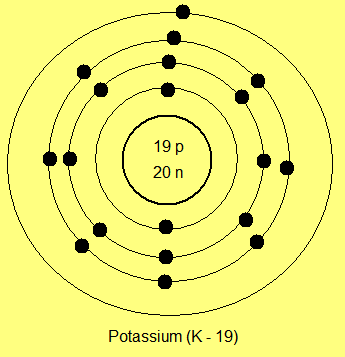Alkali metals exhibit a number of similar physical and chemical properties:
Electronic configuration
Each alkali metal has a single valence electron. The inner shells of their atoms are filled with electrons to their capacity (octet/duplet). Thus during chemical reactions the alkali metals tend to lose their outermost electron to get a balanced electronic configuration. In doing so, they form positively charged ions.
The general electronic configuration of alkali metals can be written as [Noble gas] ns1, since the outermost electron in each alkali metal atom goes to the ns-orbital.
Atomic properties
Atomic properties of alkali metals exhibit a gradual gradation from top to bottom. The atomic radius increases gradually from 152 pm for Lithium to 265 pm for Cesium. Similarly the ionic radius also increases from top to bottom, starting from 76 pm for Lithium to 167 pm for Cesium.
Alkali metals have the greatest atomic as well as ionic radii in their respective rows because the nuclear charge (pull) on the valence shell increases on moving from left to right in a row due to increase in the atomic number, whereas the number of shells in each atom remains the same throughout the row. Thus, on moving from left to right, the increasing nuclear charge in each element's atoms pulls the electron shells closer to itself, thereby decreasing the atomic/ionic radii.
Alkali metals have atomic radius greater than ionic radius for each atom, because they form ions by loosing their single valence electron, which reduces the number of electron shells and increases the amount of positive charge in the nucleus attracting the electron shells closer to it.
Physical properties
Alkali metals have low melting and boiling points and densities. This is due to the fact that inter-atomic forces between atoms are weak owing to the presence of a single valence electron in all atoms, which weakens the formation of metallic bonds (same atom bonds) within the same atoms.
With respect to variation, melting and boiling points decrease down the group and density increases down the group.
All alkali metals are lustrous: they are silvery white metals which when freshly cut show a lustrous surface, as on exposure to air they get oxidized quickly and thus loose their luster. They are malleable and ductile and can be cut with a knife.
Electronegativity
Alkali metals have low electronegativities because their atomic sizes are large and they have only one valence electron, so the nuclear pull on the valence electron is less and it tends to get donated to other electronegative atoms during chemical reactions.

